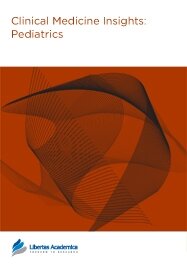

Publication Date: 18 Mar 2009
Journal: Clinical Medicine Insights: Pediatrics
Citation: Clinical Medicine: Pediatrics 2009:3 23-31

Objective: To determine, by phenotypic and genotypic methods, oxacillin susceptibility in Staphylococcus aureus strains isolated from pediatric and neonatal intensive care unit patients seen at the University Hospital of the Botucatu School of Medicine.
Methods: A total of 100 S. aureus strains isolated from the following materials were studied: 25 blood cultures, 21 secretions, 12 catheters, 3 cannulae and one chest drain from 62 patients in the neonatal unit, and 36 blood cultures, one pleural fluid sample and one peritoneal fluid sample from 38 patients in the pediatric unit. Resistance of the S. aureus isolates to oxacillin was evaluated by the disk diffusion method with oxacillin (1 μg) and cefoxitin (30 μg), agar screening test using Mueller-Hinton agar supplemented with 6 μg/ml oxacillin and 4% NaCl, and detection of the mecA gene by PCR. In addition, the isolates were tested for β-lactamase production using disks impregnated with Nitrocefin and hyperproduction of β-lactamase using amoxicillin (20 μg) and clavulanic acid (10 μg) disks.
Results: Among the 100 S. aureus strains included in the study, 18.0% were resistant to oxacillin, with 16.1% MRSA being detected in the neonatal unit and 21.0% in the pediatric unit. The oxacillin (1 μg) and cefoxitin (30 μg) disk diffusion methods presented 94.4% and 100% sensitivity, respectively, and 98.8% specificity. The screening test showed 100% sensitivity and 98.8% specificity. All isolates produced β-lactamase and one of these strains was considered to be a hyperproducer.
Conclusions: The 30 μg cefoxitin disk diffusion method presented the best result when compared to the 1 μg oxacillin disk. The sensitivity of the agar screening test was similar to that of the cefoxitin disk diffusion method and higher than that of the oxacillin disk diffusion method. We observed variations in the percentage of oxacillin-resistant isolates during the study period, with a decline over the last years which might be related to improved nosocomial infection control and the rational use of antibiotics.
PDF (2.30 MB PDF FORMAT)
RIS citation (ENDNOTE, REFERENCE MANAGER, PROCITE, REFWORKS)
BibTex citation (BIBDESK, LATEX)
XML
PMC HTML

The publishing experience in Libertas Academica journals is unique. Readers can feel satisfied that publications are peer reviewed. Authors follow simple steps to reach final stage of publication. All readers have access to articles. Journal subscriptions or medical library access is not needed.
Facebook Google+ Twitter
Pinterest Tumblr YouTube